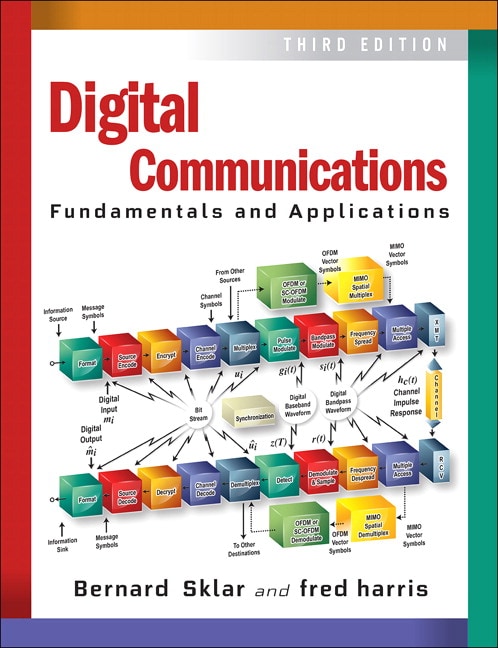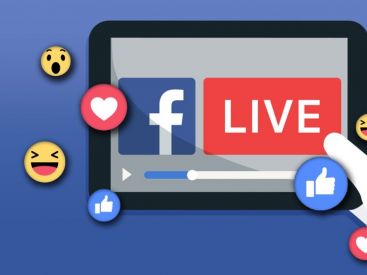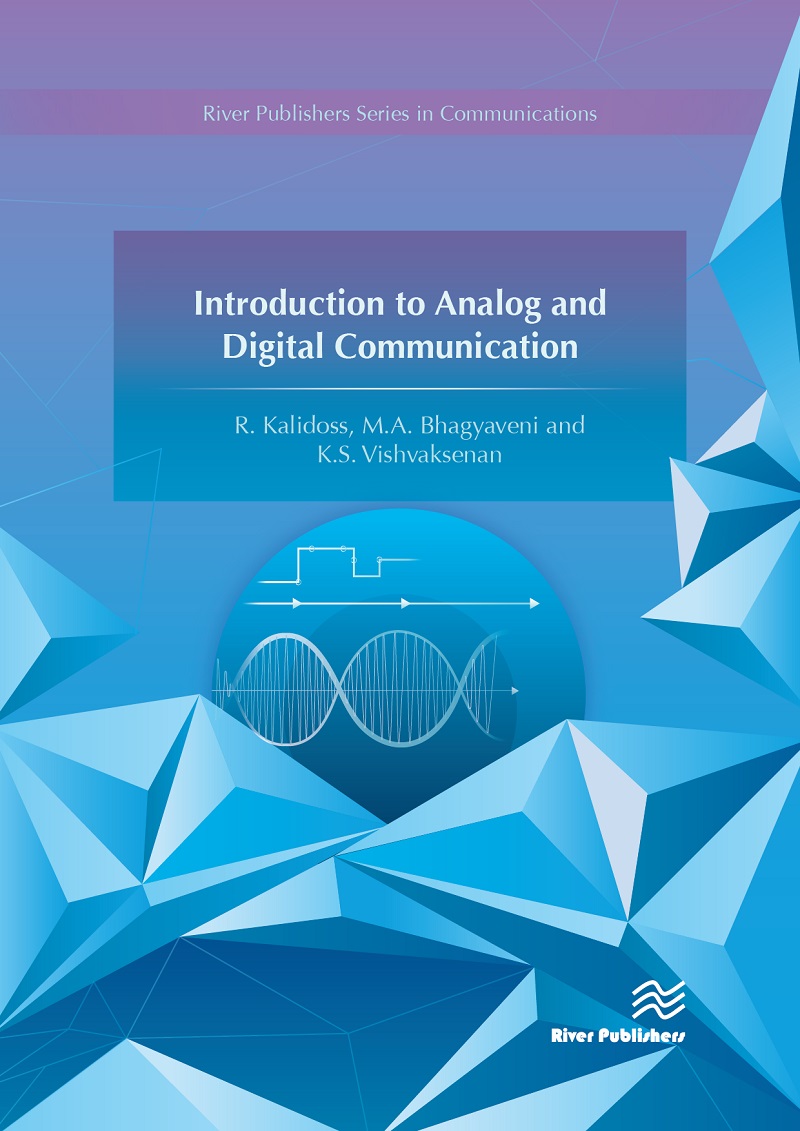Digital Communication
Digital communication is crucial to branding in today’s internet landscape. Before the digital age, communications professionals had to navigate print media, TV, radio, and billboard advertising. Digital communication can be defined as the electronic exchange of information. It can be in the form of cell phones, social networking, instant messaging, emailing, blogging, video conferencing, wikis, and much more. All these are fast and easy ways to communicate that have many benefits. Definition: Analog and digital communications are the two types of data transmission system however several factors generate the difference between the two. The major difference between analog and digital communication lies in the signal being transmitted. In analog communication, the message signal is in analog form i.e., continuous time signal. Digital communication is any computer-based technology for communicating. This includes personal communication and the communication of information, entertainment and promotions to broad audiences. The following are common examples of digital communication.
- Digital Communication Sys Wsj Crossword
- Digital Communication Tutorial
- Digital Communications Rf
- Digital Communication
- Digital Communication Meaning
Digital communication is crucial to branding in today’s internet landscape. Before the digital age, communications professionals had to navigate print media, TV, radio, and billboard advertising. While those channels are still important, current professionals must be well-versed in digital platforms, such as social networks, email, messaging apps, and blogs.
According to the UNESCO Broadband Commission for Sustainable Development, the majority of the world’s population now has access to the internet, and that percentage continues to grow. In 2019, 54.8% of all global households had internet access, and brands are doubling down on strategies to engage with those users. Harvard Business Review found that 73% of consumers use more than one channel when researching potential purchases. And Seagate reported that two-thirds of CEOs will use digital strategies to enhance customer experience this year.
As author David Meerman Scott wrote in The New Rules of Marketing and PR, “Instead of one-way interruption, web marketing is about delivering useful content at precisely the right moment when a buyer needs it.”
To succeed in digital communication, marketers, public relations representatives, and community managers need tools and techniques to connect with consumers across touch-points. With the right resources, communications professionals can build strategic campaigns that reach target audiences and deliver personalized experiences.
Here are essential digital communication platforms and strategies for boosting organizational and personal brands.
Understand the Definition of Digital Communication
To start, let’s determine a digital communication definition: Digital communication is the process of connecting with people across online channels. This might involve launching social media campaigns, distributing email newsletters, running banner ads, or publishing native advertising articles. Businesses can use digital communication to expand their reach, share specialized messaging, and build valuable relationships with their audiences.
As eBay founder Pierre Omidyar told Bloomberg Businessweek, “We have technology, finally, that for the first time in human history allows people to really maintain rich connections with much larger numbers of people.”
Business may launch digital communication campaigns for a variety of reasons:
- Building a brand: Businesses can create a brand image for a startup company or transform a brand image for a legacy organization that is pivoting in a new direction.
- Generating awareness: Companies can cast a wide net to let potential customers know about products, services, and values.
- Driving conversions: Campaigns can inspire customers to move through the marketing funnel and buy products, either online or at a brick-and-mortar location.
- Creating customer experiences: Campaigns can be customized to build unique experiences and brand affinity through targeted social campaigns, one-on-one messaging apps, or livestream videos.
- Delivering customer service: Community managers can answer real-time questions to solve issues or follow up with satisfied customers to go the extra mile.
- Managing risk: Businesses can conduct damage control by building brand affinity and improving brand reputation after a mishap.
- Providing entertainment: Marketers can give audiences more of the content they enjoy, such as engaging video series or funny articles.
- Educating consumers: Companies can address customer pain points and help them improve their lives through informative digital content.
Reach Audiences Through Email
Marketers can use email to reach consumers directly through their inbox, where they already receive correspondence from family, friends, and colleagues. According to Adobe, consumers spend 2.5 hours each workday checking their personal email and 3.1 hours checking their work email. Additionally, eMarketer reported that 62.9% of internet users prefer to receive email communication from retailers, beating out other platforms such as social media and brand websites.
Email can house a variety of content types:
- Discounts and offers for seasonal deals, new product launches, and customized recommendations
- Blog post roundups of recent articles from the brand website or third-party websites, which can even be categorized by vertical and distributed to segmented audiences
- Birthday or anniversary messages to check in with current customers and build affinity, which may even include a gift or deal for the occasion
- Surveys to learn more about how consumers enjoy the brand experience and services
- Exclusive content, such as sneak peeks at product launches, Q&As, or behind-the-scenes information
- Daily or weekly newsletters to keep audiences up to date on company developments, newly published content, and opportunities to engage with the brand
- Personalized recommendations for content or products based on previous customer behavior
Consider these tips when crafting email communications:
- Segment audiences by interest, level of engagement, or demographic. For example, brands can send one batch of emails to new customers, a second to customers who need to be re-engaged, and a third to loyal customers.
- Choose a catchy, short subject line that grabs the recipient’s attention so the email doesn’t get lost in the inbox or end up in the spam folder. According to Marketo, the ideal length of a subject line is seven words or 41 characters.
- Include a direct call to action, such as “Subscribe,” “Visit website,” “Learn more,” or “Shop now.”
Launch Engaging Social Media Campaigns
Digital communication is often synonymous with social media communication. Social media allows people across the world to connect with friends, family, celebrities, and brands through bite-sized textual and visual content. According to Pew Research Center, 72% of U.S. adults use social media, with Facebook, YouTube, Twitter, Instagram, and LinkedIn being the most popular platforms. Additionally, Sprout Social found that social media is the top-ranked channel for connecting with customers, and 57% of customers will increase their spending if they feel connected to a brand.
Communications professionals can use popular social media platforms to build brands in different ways:
- Facebook is effective for building an engaged social community, either through an official brand page or through relevant groups. Brands would be wise to invest in native video, which founder Mark Zuckerberg hopes will “encourage meaningful social interactions.”
- YouTube: As Forbes reports, brands can use YouTube to build web series, partner with influencers, create how-to videos, give behind-the-scenes looks at their processes, and repurpose website content. Since Google owns YouTube, brands should also consider using search engine optimization tactics so their videos show up in search results.
- Twitter: Topics such as television, sports, and world news do well on Twitter, according to its 2018 Year in Review. Brands and consumers use the platform to live-tweet their favorite events, follow and contribute to trending hashtags, and connect one-on-one through public interactions or direct messages. Twitter is also a go-to platform for customer service, as many brands have created separate customer care accounts for inquiries.
- Instagram: Parent company Facebook reported that 66% of Instagram users connect with brands on the visual platform. Social Media Today found that most brands use Instagram Stories, ads, and IGTV (for long-form videos) to reach audiences. Instagram provides a hub for fashion, beauty, and celebrity content.
- LinkedIn: As a business-to-business (B2B) social network, LinkedIn is useful for connecting with other companies, sourcing new hires, and engaging in thought leadership. Executives, for example, can use LinkedIn to create blog posts pulling back the curtain on their brand and engage with other experts in their field. According to Sprout Social, 70% of consumers feel more connected to a brand when its CEO is active on social media.
Build a Community on Facebook
Facebook is the most popular social network, with over 2.3 billion monthly users worldwide. Yet it’s also one of the trickiest digital communication channels to master. Frequent algorithm changes have caused organic reach to decline, as users favor posts from friends and family over content from brands and publications, according to Digiday. Brands have been scrambling for new ways to reach Facebook’s massive, tapped-in audience.
Consider these tips for building Facebook communication strategies that drive engagement:
- Buy Facebook Ads: Organic reach may be on a downturn, but brands can still use Facebook Ads to get their content in people’s news feeds. They can also use this tool to target specific demographics and A/B test content to see which text and visuals generate the best response.
- Invest in video:Forbes reported that over 500 million people watch Facebook video every day, officially unseating YouTube as the most watched video platform. Mediakix also reported that Facebook Live videos are watched three times longer than standard videos, and most videos are viewed without sound.
- Use Facebook Messenger: According to eMarketer, there are over 149 million mobile messaging app users in the U.S., the most popular of which is Facebook Messenger. Brands can use this chat app to deliver customer service, automate interactions through chatbots, and send sponsored messages directly to consumers.
Harness the Power of Mass Media
Mass media communication has traditionally encompassed TV, radio, and movies — outlets that reach a wide audience with universally consumable content. As poet W. H. Auden once said, “What the mass media offers is not popular art, but entertainment which is intended to be consumed like food, forgotten, and replaced by a new dish.” This description is applicable to today’s viral YouTube videos and wide-reaching internet platforms such as social networks. Meanwhile, digital communication platforms, including Netflix and Hulu, have partially replaced TV, and podcasts have emerged as an alternative to radio.
Brands can take advantage of mass media communication with a range of strategies:
- Shift TV budgets to digital video platforms: Emarketer expects digital ad spending to overtake traditional ad spending (such as on print and TV) for the first time by the end of 2019. Marketing Land also reported that TV budgets are more efficient when combined with YouTube and Facebook budgets. Brands can advertise natively in digital video or buy pre-roll and interstitial ads on YouTube and Facebook.
- Advertise on popular podcasts: Brands can sponsor podcasts, pay for shoutouts in episodes, or even produce their own podcasts that align with consumer interests. As Forbes notes, advertisers can pay for baked-in ads that live in a podcast episode forever or dynamic ads, which are programmatically inserted based on the content and audience.
- Produce digital content inspired by traditional mass media content: Brands can piggyback on traditional media reach by creating articles, videos, and social content based on trending movies, books, or TV shows.
Create Digital Advertising Strategies
Along with regularly producing digital content, such as on their websites and social feeds, brands can also invest in advertising communication campaigns across digital channels.

- Banner ads: Programmatically placed on websites, banner ads exist at the top or side of a webpage or in the middle of an article. They’re typically paid for by impressions or clicks.
- Native advertising: Marketers pay publishers to create original content that seamlessly incorporates their brand or products. Native advertising is considered more user-friendly than banner ads because it fits into the surrounding content and doesn’t disrupt the user experience.
- Social media advertising: On Instagram, for example, advertisers can buy photo ads, video ads, Instagram Story ads, and carousel ads of multiple pictures or videos. These ads can be targeted to specific social users based on interests, demographics, and behaviors.
- Influencer advertising: Brands can tap social influencers with target audiences to create content on their behalf. A YouTube creator, for example, can create a sponsored video that creatively incorporates products into the narrative. The influencer can then invite viewers to learn more about the products and offer a customized discount code or website link.
- Google AdWords campaigns: Brands can bid on certain keywords and search queries for a chance to have their websites show up at the top of Google search results. These campaigns can be effective for building brand awareness and guiding prospective customers toward a brand website.
Build a Career in Digital Communication
Those looking to hone their digital communication skills might consider Maryville University’s online Bachelor of Arts in Communication. It provides students with the resources they need to succeed in digital media and forge the future of online marketing. With concentrations in Strategic Communication and Emerging Media Strategy and Social Media, this program is designed to foster the next generation of media experts. Students can build a portfolio of professional writing, get hands-on experience through internships, and learn specialized skills for creating online communities.
Recent graduates have attained positions as digital media specialists, PR representatives, and social media coordinators, for example. They’ve also worked in a variety of settings, including advertising companies, nonprofits, government organizations, and publishing houses.
As the digital landscape continues to evolve, new technologies will emerge to transform business communications. A robust degree program can arm professionals with the tools they need to effectively strategize, adapt, and engage online audiences in their chosen field.
Recommended Readings
Sources
Scott, David Meerman, The New Rules of Marketing and PR, Wiley (6th Edition), July 2017
Course: B.Tech
- Digital Communication
All time popular Study Materials
Note for Digital Communication - DC by nishita goyal
By Nishita GoyalNote for Digital Communication - DC by Prajakta Wasekar
Digital Communication Sys Wsj Crossword
By Prajakta WasekarNote for Digital Communication - DC by Priyam Jaiswal
By Priyam JaiswalNote for Digital Communication - DC by Ramesh Varma
By Ramesh VarmaNote for Digital Communication - DC by SANYASI RAO ALLANKI
By SANYASI RAO ALLANKINote for Digital Communication - DC by Mahadev Mugalihal
By Mahadev. MugalihalNote for Digital Communication - DC by kusum chaudhary
By kusum chaudharyNote for Digital Communication - DC by Dlisha
By DlishaPrevious Year Exam Questions for Digital Communication - DC of 2018 - BPUT by Bput Toppers
By Bput ToppersPrevious Year Exam Questions for Digital Communication - DC of 2016 - GTU by kusum chaudhary
By kusum chaudharyNote for Digital Communication - DC By Rashika Sinha
By Rashika SinhaNote for Digital Communication - DC By Madhan Kumar
By madhan kumarPrevious Year Exam Questions of Digital Communication of KIIT - DC by Ruparani Mahapatra
By Ruparani MahapatraPrevious Year Exam Questions of Digital Communication of KIIT - DC by Ruparani Mahapatra
By Ruparani MahapatraPrevious Year Exam Questions of Digital Communication of KIIT - DC by Ruparani Mahapatra
By Ruparani MahapatraPrevious Year Exam Questions of Digital Communication of KIIT - DC by Ruparani Mahapatra
By Ruparani MahapatraCourse: B.TechGroup: Digital System
Also Known as:Digital Electronics Circuit, Digital Signal Processing, Digital Communication Techniques, Digital Switching and Telecommunication Networks, Principal Of Digital Communication, Digital Logic, Advanced Digital Signal Processing, Digital Design Through Verilog HDL, Digital Logic Design and Computer Organisation, Digital Logic Design, Digital System Design, Digital Principle and System Design, Digital Circuits and Design, Digital Logic Circuits, Digital Principles and Design, Digital Control System, Digital Forensics, Digital Electronics, Digital Switching and Transmission, Digital VLSI, Digital Communication Technology, Digital Switching Systems ,
, Digital Communication Tutorial
Digital Image And Video Processing, Advanced Digital Design Using Verilog , Digital System Design Using Verilog, Advance VLSI Design, Digital Integrated Circuit Design, Digital Design and Verification, Digital systems and Applications, Digital Design For Apparel Categories, Digital Electronics and Logic Design
, Digital System Design Using Verilog, Advance VLSI Design, Digital Integrated Circuit Design, Digital Design and Verification, Digital systems and Applications, Digital Design For Apparel Categories, Digital Electronics and Logic DesignDigital Communications Rf
, Digital System Testing And Testable DesignDescription:
Digital Communication - Digital Communication, DC Study Materials
Digital Communication
 Similar Links:
Similar Links:Digital Communication Meaning
FacebookTwitterLinkedinPinterest